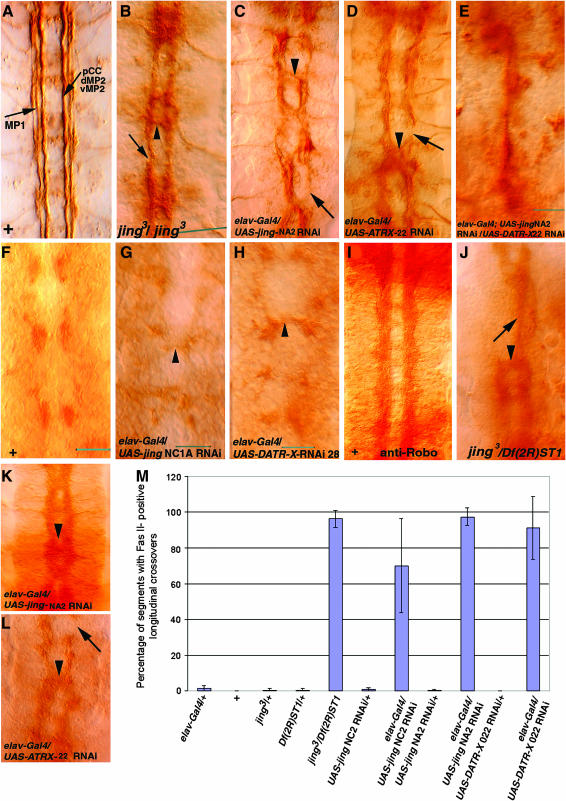Figure 6.—
DATR-X and jing functions are required specifically in CNS neurons for longitudinal connective formation. DATR-X and jing RNAi transgene expression was driven in neurons by ELAV-Gal4. (A–E and F–L) Shown are close-up views of the VNC of whole-mount stage16 embryos stained with anti-Fasciclin II monoclonal antibody (1D4) (A–E) and anti-Robo (F–L). Stage 12 embryos stained with anti-Robo (F–H). (A) In wild-type embryos, three longitudinal fascicles are clearly delineated. (B–D) In jing (B and C) and DATR-X (D) mutants, longitudinal fascicles misroute across the midline (arrowheads) and are broken (arrows). (E) After coexpression of jing and DATR-X RNAi transgenes in neurons, longitudinal fascicles fuse into one tract at the midline. (F) Wild-type Robo-positive glia are present on each side of the midline. (G and H) Medial misplacement of Robo-positive glia (arrowheads) occurs after neuronal-specific knockdown of jing and DATR-X. (I) Lateral positioning of Robo-positive axons in wild-type embryos. (J–L) Robo-positive axons cross the midline (arrowheads) after neuronal-specific knockdown of DATR-X and jing. Axonal breaks are evident (arrow in L). Arrow in J denotes remaining connective. (M) Graph displaying the average number of longitudinal axons that cross over the CNS midline per embryo.

